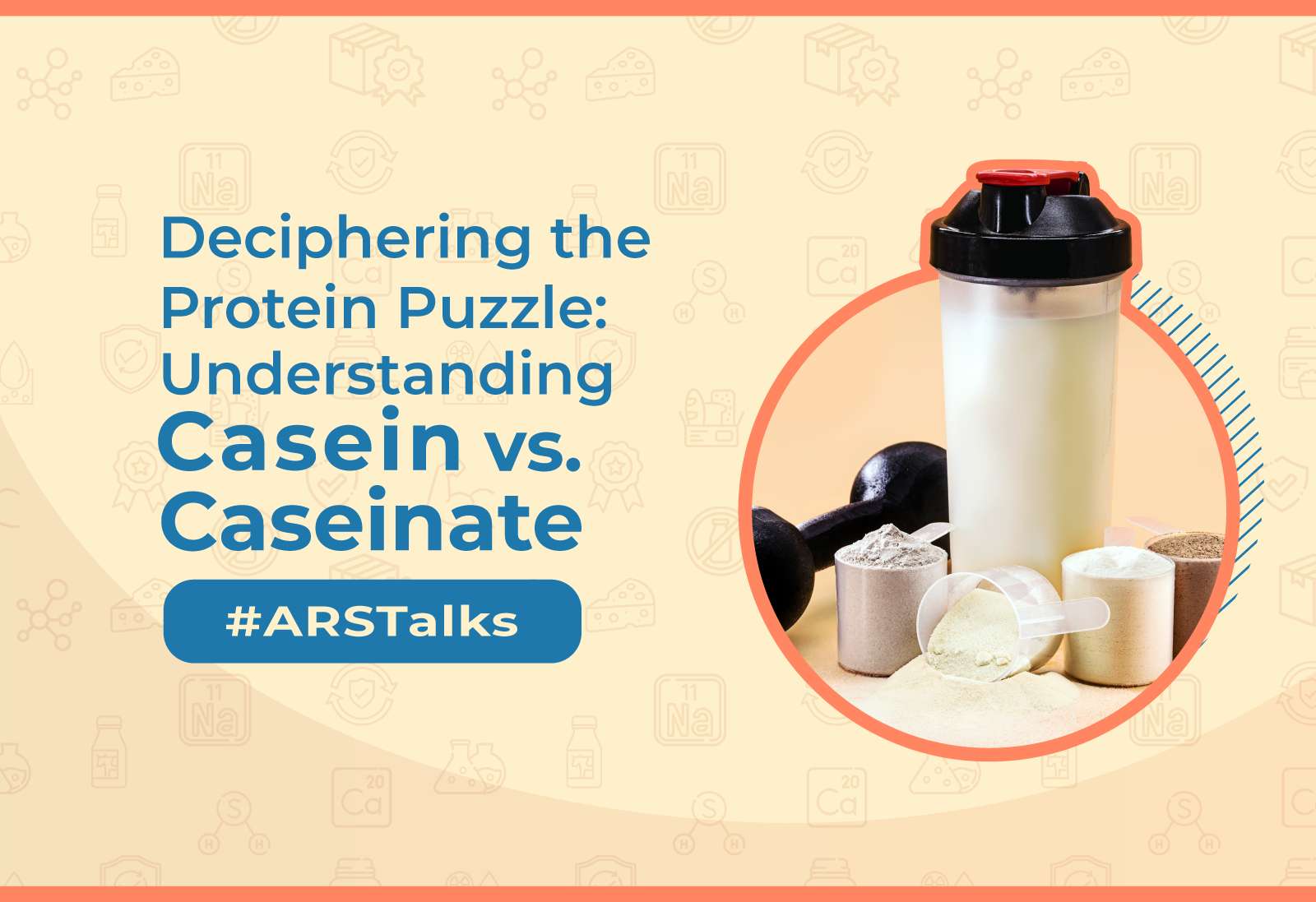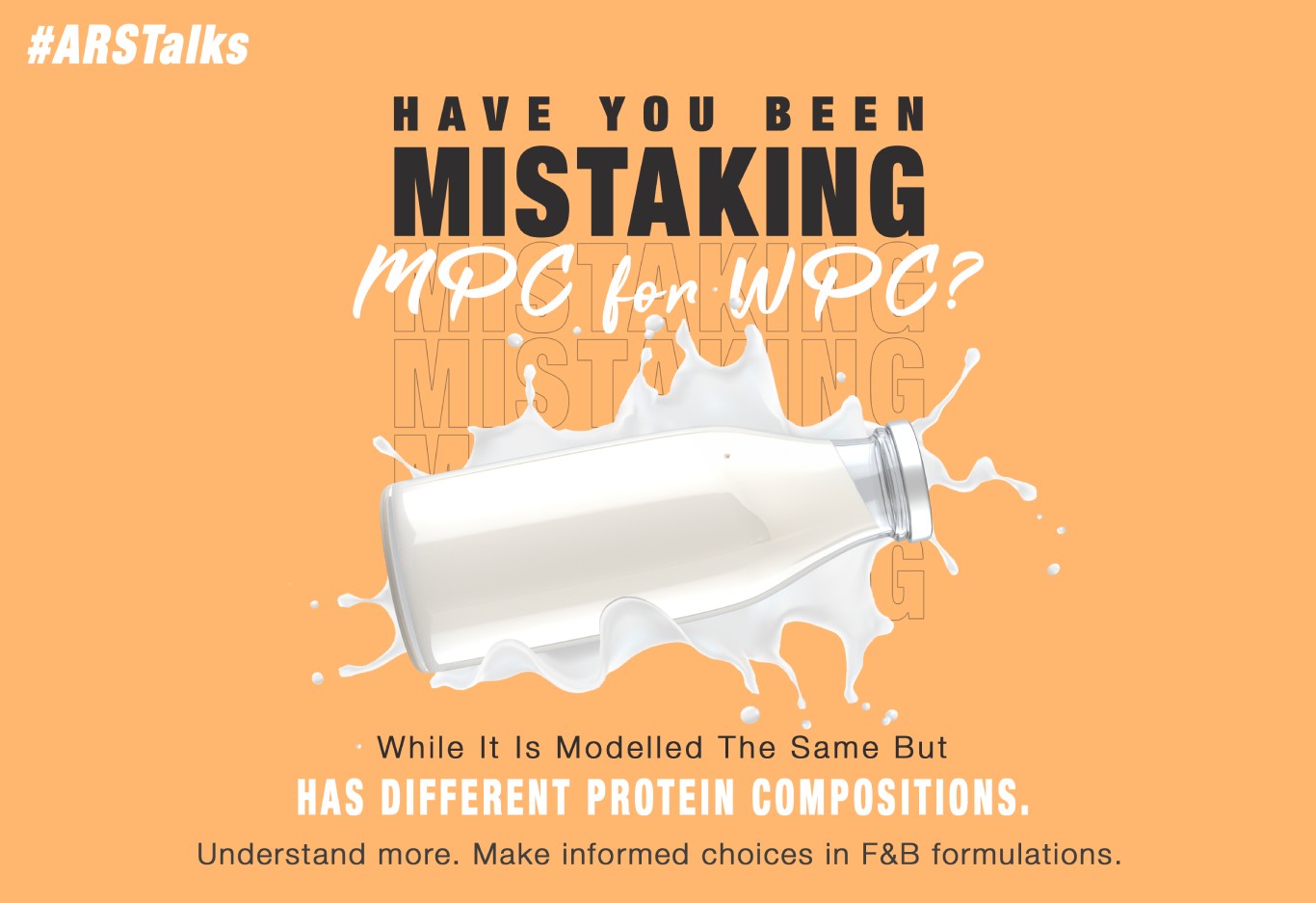Deciphering the Protein Puzzle: Understanding Casein vs. Caseinate

As unfamiliar as their names may seem, casein and caseinates are far from strangers in the realm of food additives. Delving into these protein components, we uncover the significant differences and the role they play in enhancing various culinary and nutritional aspects of our lives.
What is Casein?
Mr. Akshit Gupta, a certified dairy scientist and food & beverage ingredients expert, suggests that casein, a natural protein found in cow’s milk, is both a nutritional cornerstone and a versatile ingredient utilized across industries.
- Making up an astounding 80% of the protein content in cow’s milk, casein acts as a foundational component for a myriad of products.
- Like imitation cheese, cheese substitutes, and cheese products.
- Derived from methods like microfiltration, ultracentrifugation, and acid precipitation, pure casein is a granular product with a multitude of applications, including protein powders.
- The FDA ensures product quality, safety, and eliminates contaminants, safeguarding protein-rich sources.
Exploring Caseinates: Beyond the Basics
While casein serves as the cornerstone of many products, caseinates are its modified counterparts produced through commercial processes.
- Dissolved in alkaline solutions involving calcium or sodium, caseinates possess unique properties that set them apart from their foundational form.
- Various types of caseinates, including sodium, calcium, find their way onto nutrition labels and into food processing.
- Water-soluble compounds exhibit excellent foaming, emulsifying, and gelling attributes, making them essential ingredients in an array of foods, including non-dairy creamers, cured meats, pastries, and other baked goods.
Navigating Allergies and Benefits
For F&B manufacturers, labeling your product as lactose-free and safe for those with lactose intolerance is crucial. Mr. Gupta assures that pure casein and caseinates can be enjoyed by lactose-intolerant individuals. However, caution is advised for milk-allergic individuals, especially children, who should avoid casein and caseinate derivatives to prevent adverse reactions. Transparent labeling is paramount for consumer safety.
Despite the differences, the benefits of casein and caseinates are undeniable.
Their easy digestibility and rich amino acid profile make both of them efficient sources of nutrients, especially for muscle growth and bone health.
- While whey protein is the first choice of ingredient these days as it is quickly digestible, casein and caseinates provide a sustained release of amino acids, which can be advantageous in various nutritional contexts over whey protein
Seeking Professional Guidance
With years of experience, Mr. Akshit Gupta emphasizes that consulting with a nutritionist becomes pivotal when contemplating the incorporation of protein powders into formulations.
- The intricacy of individual nutritional requirements highlights the significance of tailored guidance, guaranteeing a well-balanced and health-conscious utilization of these protein-rich elements.
In the realm of nutrition, as in life, understanding the nuances and differentiating between similar entities can lead to more informed and beneficial choices. With the insights provided by Mr. Gupta, the realm of casein and caseinates becomes clearer, guiding individuals toward culinary and nutritional decisions that align with their unique needs and preferences.








